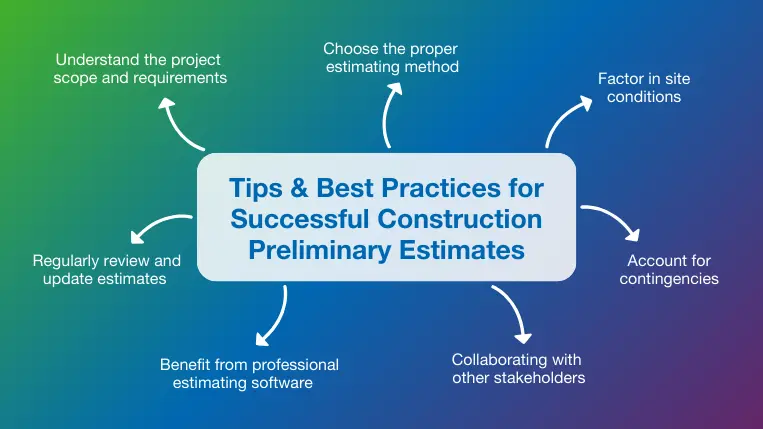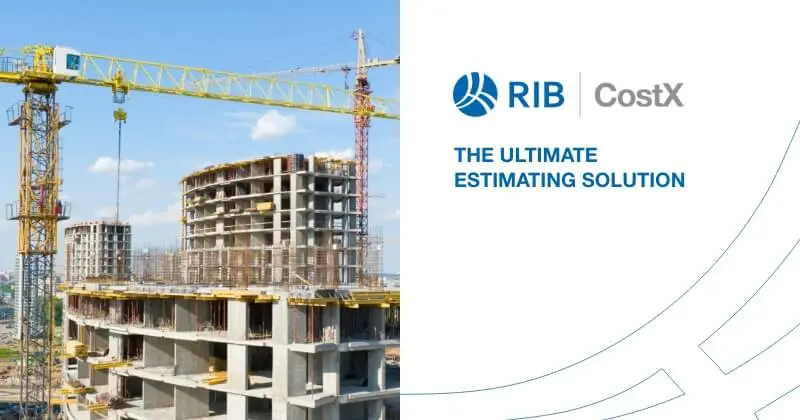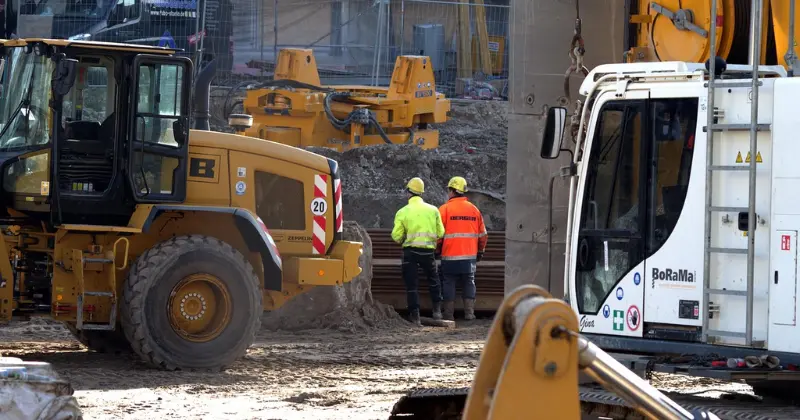17 mins read
Preliminary Estimate: Defining the Goals and Limitations of Early Phase Construction Estimates

The word preliminary usually means something more complete lies ahead. This is certainly true of preliminary estimates in construction since they help fill the information gaps before detailed estimates are feasible. The need for early phase cost information is balanced by uncertainty, but the latest tools and best practices help to make these estimates as timely and accurate as possible.
In this blog post, we review the concept of preliminary estimates and the reasons they are used and explain the critical characteristics and limitations that must be considered. We also provide a useful list of tips and best practices to maximize the value of these estimates for all stakeholders.
What is a Preliminary Estimate?
A preliminary estimate in construction is an initial cost estimate completed based on limited information during the earliest stages of a project. Preliminary estimates help assess feasibility and develop an initial budget, which in turn helps stakeholders make informed decisions.
The lack of precise details on design elements, site conditions, timelines, and other essential facts can lead to inaccuracies that must be well understood and communicated to all stakeholders reviewing the information. The elements of a successful preliminary estimate typically include:
- Project scope and description
- Historical data used to develop the estimate
- Relevant industry standards and building codes
- Constraints, risks, and limitations of the estimating process
- The preliminary project contingency budget
Unlike conceptual estimates that are typically completed based on only a rough design concept, preliminary estimates are prepared when the project design is partially complete, but final decisions on material types, finishes, and site location might still be under consideration.
Who Uses Preliminary Estimates?
Preliminary estimates are useful for many stakeholders, including project owners and clients who want to understand the potential project cost as early as possible and financiers who want to know how much capital might be required to assess risks associated with the financing process.
Contractors also use preliminary estimates to assist with their bidding process as they research the cost of labor, materials, and other resources. In some cases, real estate developers will also be keen on reviewing preliminary cost estimates since they help them decide whether new projects are worth pursuing.
Preliminary Estimating vs. Detailed Estimating
While there are some similarities and common threads, preliminary estimating is a very different process with different inputs and expectations. Detailed estimates are not completed until the design specifications and raw material choices, decorative finishes, and other cost-driving factors are fully developed. Additional differences that distinguish preliminary estimates from detailed estimates include:
- Less time and money are required to complete them
- Greater reliance on historical information
- Decreased levels of accuracy and reliability
- Less specific material quantities and grades included
The purpose of the two estimate types is another crucial difference, since detailed estimates feed into budget approvals and finalized contracts. Preliminary estimates are primarily used for early decision-making and construction feasibility studies, since they lack the accuracy and detail needed for project execution.
Importance of Preliminary Estimates
A preliminary estimate serves an important purpose by filling the void between the conceptual and detailed estimates to be completed later in the project. During this critical planning stage, decisions on materials, site location, scheduling, and other variables must still be made, even without the benefit of a finalized construction drawing package. Preliminary estimates allow the project to move forward with acceptable risk and uncertainty.
Potential Limitations of Preliminary Estimates
Designers, consultants, or construction estimators preparing a preliminary estimate must understand and communicate the potential limitations of this practice. For example, any assumptions that are made based on incomplete drawings or design specifications should be made clear, along with any costs or resource requirements calculated based on historical data.
Additional limitations include material costs that fluctuate between the planning and construction phases, changes in project scope that significantly increase or decrease the cost, and project risks that were not yet identified when the estimate was completed. These limitations make preliminary estimates a helpful starting point that is not precise enough to support the construction bidding process and budget creation activities.
Tips & Best Practices for Successful Construction Preliminary Estimates

The uncertainty associated with preliminary cost estimates makes it essential to follow some established best practices that minimize guesswork and make the estimates as accurate as possible, despite the constraints and limitations.
1. Understand the project scope and requirements
The accuracy of any estimate is based on the volume and relevancy of available data. This makes it essential to gather as much information on the project scope, size, and requirements as possible, so that basic assumptions can be made regarding material, labor, and equipment. If the construction site has been chosen, additional research can reveal any permit, traffic, or zoning issues impacting the project cost. Understanding the project scope also makes it easier to find historical information on previous projects with similar attributes.
2. Choose the proper estimating method
Preliminary estimates are understandably less accurate than detailed estimates, but this has not prevented construction professionals from developing new methods to suit the time, information, and technology constraints of the project. The most widely used methods include:
- Comparative methods that leverage a combination of historical data and industry benchmarks to estimate costs based on similar projects.
- Parametric methods that use computer software and statistical analysis to adapt previous costs based on current project and market parameters.
- Square footage methods that produce a rough estimate based on a predefined unit cost for each square foot (or square meter) of building space.
These construction estimate methods can also be combined to produce estimates based on different rules and compare the results.
3. Factor in site conditions
Construction site factors like soil condition, drainage, accessibility, and environmental regulations can significantly impact the final project cost. Hence, reviewing site conditions as early as possible helps to remove a layer of uncertainty from the preliminary estimating process. Site surveys and personal site visits can make the impact of these factors clear. Information on topology, weather, and location is also useful when predicting heavy equipment needs and constraints.
4. Account for contingencies
A 5-10% construction contingency budget is typical for a project to mitigate the impact of risks, unknowns, and unplanned changes. This unpredictability is highest before the design and planning activities are finalized, which makes it important to include contingencies in preliminary estimates to account for unforeseen circumstances. Much like the overall estimate, the contingency allowance will likely change as the risks and unknowns are eliminated.
5. Collaborating with other stakeholders
Communicating and collaborating with key stakeholders and experts, including construction architects, designers, contractors, and owners, is another good way to minimize the uncertainty associated with a preliminary estimate, and gather more up-to-date and relevant information on the expected material, labor, equipment, and overhead costs, as well as any critical risk factors that can increase costs. Allowing cross-functional teams to review draft estimates also helps to minimize errors and align on assumptions before distribution.
6. Benefit from professional estimating software
Takeoff and estimation software tools help teams accelerate workflows and improve collaboration during preliminary estimating. Professional estimating software, like RIB CostX, allows quantity takeoff from all common 2D and 3D design formats in an automated way, eliminating the need for manual calculations. Advanced tracking features ensure the latest available project and cost information is reflected to support decision-making, and workbook estimates are live-linked to drawings and cost databases to eliminate errors. Versatile reporting features can be tailored to any project phase, type, or client preference, making the transition from preliminaries to complete estimates swift and efficient.
7. Regularly review and update estimates
Limited information is the biggest obstacle standing in the way of preliminary estimate accuracy, so it is important to incorporate any scope, design, or material cost changes as soon as possible to improve the estimate’s accuracy over time. In this way, live-linked workbooks provide additional benefits by overcoming the potential limitations of estimates performed using conventional, offline methods.
You should also learn from the process and find improvement opportunities that can be applied to future projects, setting a continuous improvement mindset for estimating.
Conclusion
Thoughtful preliminary estimates pave the way for the detailed estimates that follow. Still, with the right software tools and practices in place, the value and accuracy of these initial estimates continue to grow, making them invaluable assets to support early decisions. There is still no substitute for diligent research and legwork, so advanced takeoff & estimation software, like RIB CostX, makes gathering and compiling relevant information easier.
CostX offers powerful features, such as embodied carbon calculations, subcontractor comparisons, and 2D takeoff from preliminary PDF and CAD files, that help overcome early phase estimate limitations. Additional collaboration features like revision tracking and live-linked estimates ensure that any changes to the design are always reflected on the estimates, making it easier to maintain an audit trail and assess the impact of changes.
RIB CostX is trusted by thousands of companies worldwide to improve their estimating, collaboration, and project management practices. Get your free demo today, and discover what our state-of-the-art takeoff and estimating solution can do for you!

Most Recent
17 mins read
11 mins read
16 mins read
16 mins read
Blog Categories

Ebook











